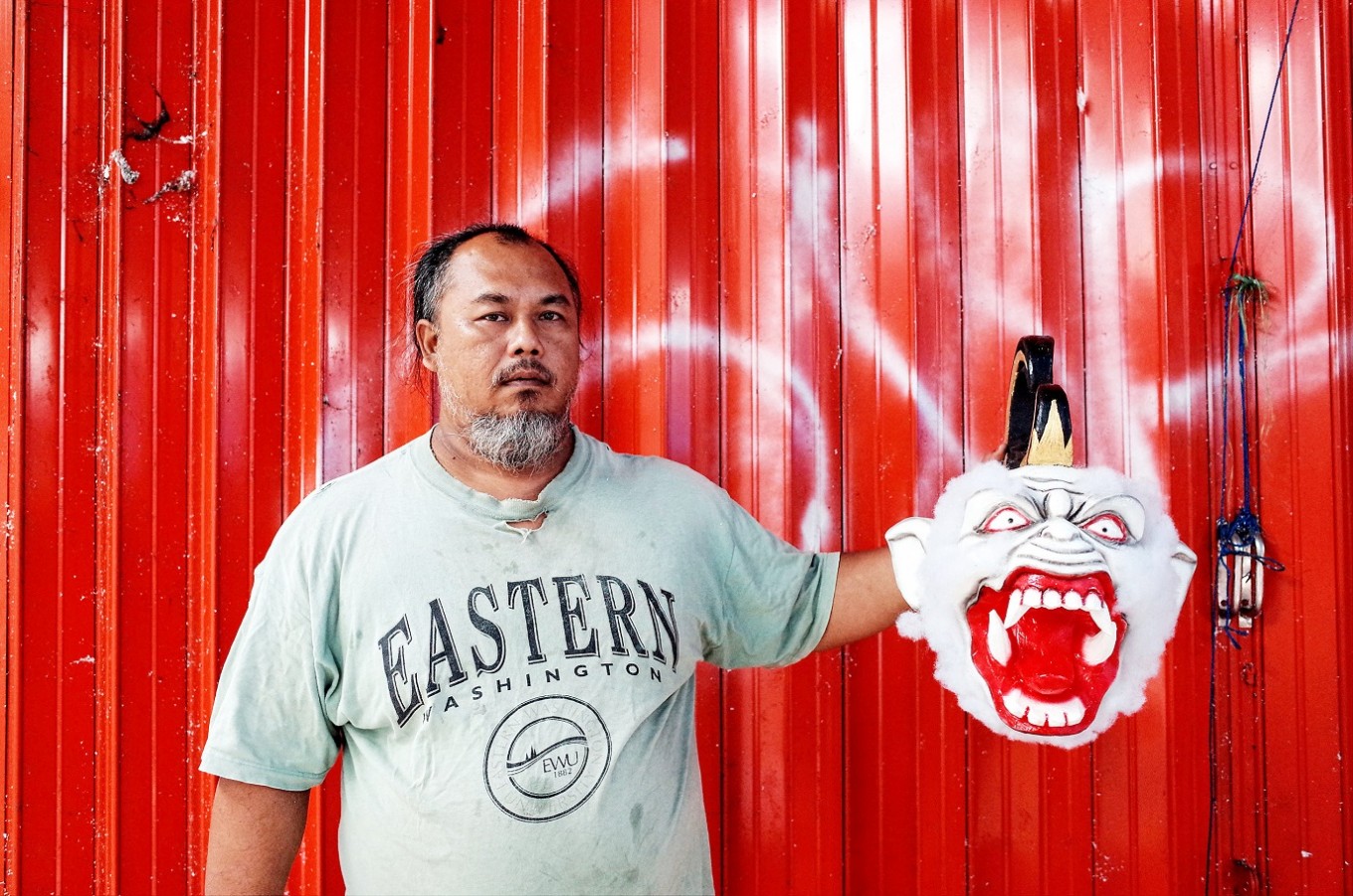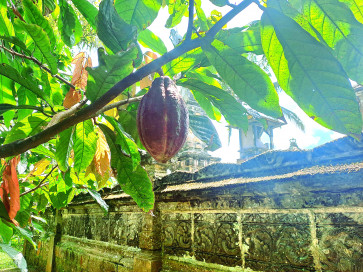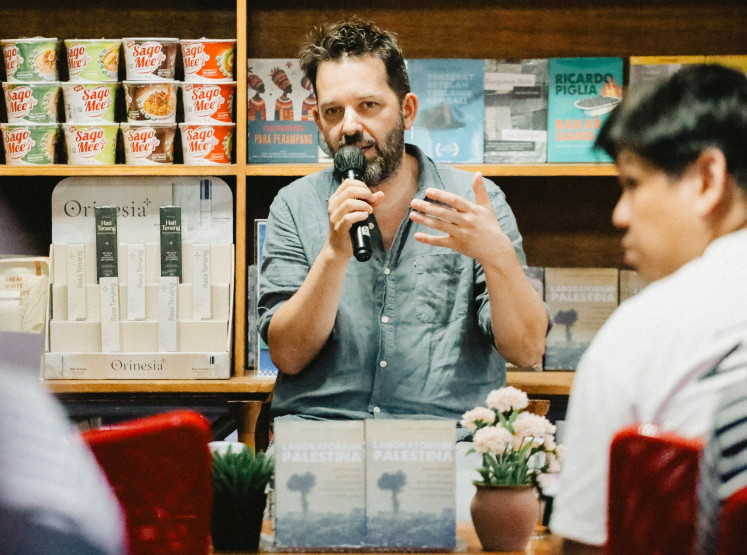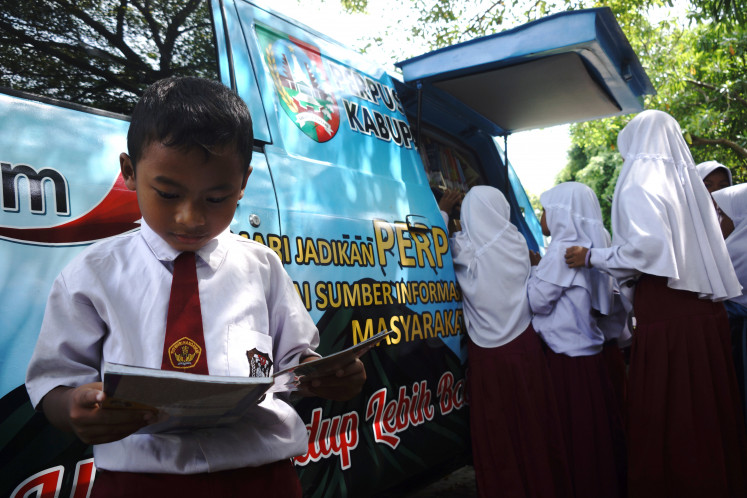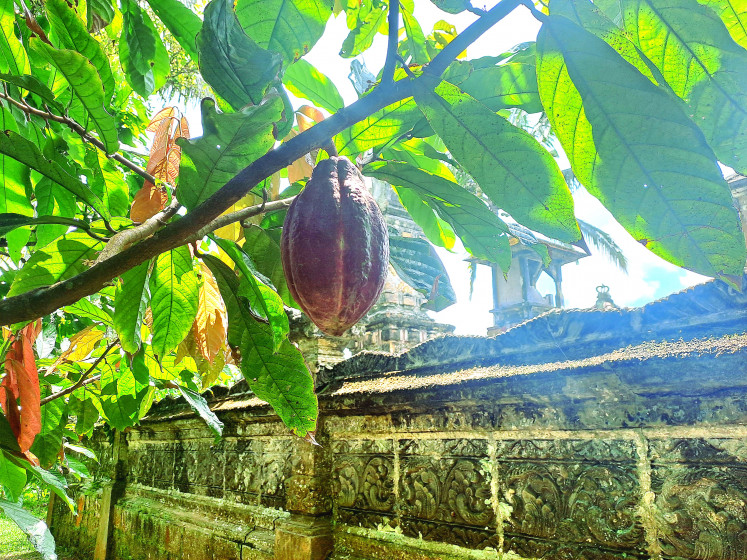Popular Reads
Top Results
Can't find what you're looking for?
View all search resultsPopular Reads
Top Results
Can't find what you're looking for?
View all search resultsThe evolution of 'ogoh-ogoh'
Bali’s scary dolls chronicle the creative journey of the island’s youths over decades.
Change text size
Gift Premium Articles
to Anyone
S
ince early March, big bike aficionados wishing to get their Harleys customized by the famed Kedux have had to be very, very patient.
The local builder, who has won awards in Indonesia and abroad and founded the island’s cult motorcycle gang NK-13, announced — in his signature timid voice — that he would keep his motorcycle-related workload to a minimum, because he wanted to focus his time on making ogoh-ogoh for his banjar (traditional neighborhood association).
Yes, Kedux abandoned Harleys, albeit temporarily, for ogoh-ogoh, the giant, menacing-looking dolls the island’s youths bear proudly upon their shoulders during the annual Ngerupuk street parade. Believed to ward off demons, the parade is held on the eve of Nyepi, the Hindu Day of Silence that marks the arrival of the new Saka lunar year.
This year Nyepi will fall on March 28 and since a few days ago, Kedux has spent most of his nights at the community hall of his banjar in Tainsiat, Denpasar, working tirelessly with local youths to complete the neighborhood’s ogoh-ogoh.
It is a giant figure of female demon with long fiery tongue and three-tiered circular shields over her head, obviously inspired by sampian mas (golden shield), the name of a level of achievement in Balinese “black magic” called leak, at which a practitioner can transform their body into supernatural creatures and beasts.
Read also: Enjoy Nyepi at these 6 hotels
Bade Mas (golden cremation tower), his creation that won last year’s city-wide ogoh-ogoh competition, was also inspired by leak. Kedux’s obsession toward ogoh-ogoh is driven less by an ambition to win the city-wide competition than by a mission to educate the island’s youths about their rich cultural heritage.
“I believe in creativity and innovation. But I also passionately believe that we must base that creativity and innovation on our cultural roots,” he said.
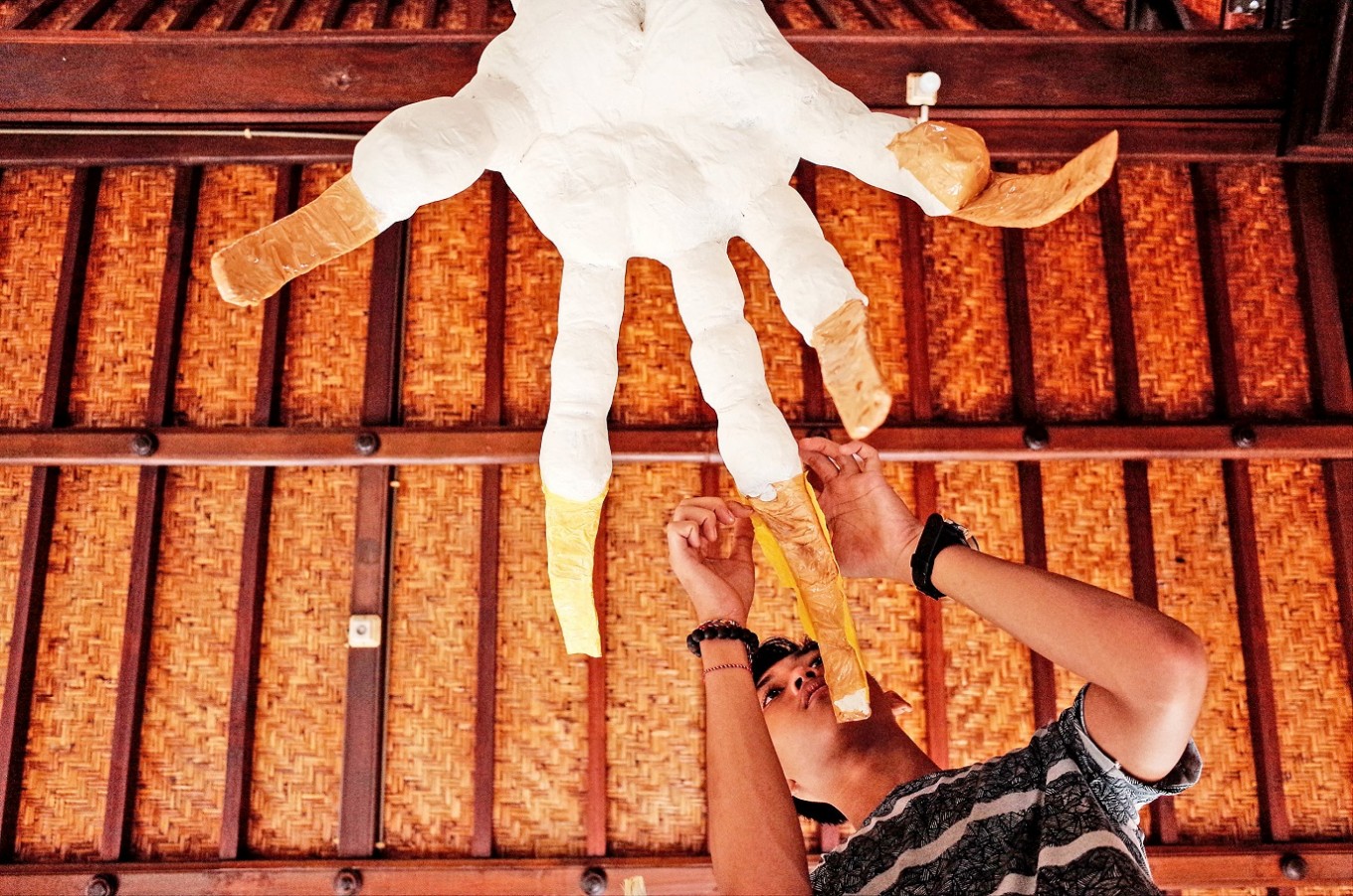 Manicure: A youth from a banjar (traditional neighborhood association), Gemeh, in downtown Denpasar fixes the fingernail of an ogoh-ogoh before painting it.(JP/Anggara Mahendra)
Manicure: A youth from a banjar (traditional neighborhood association), Gemeh, in downtown Denpasar fixes the fingernail of an ogoh-ogoh before painting it.(JP/Anggara Mahendra)
It was a soft rebuke to the growing trend among the island’s youths to create unique ogoh-ogoh inspired by foreign characters and cultural phenomena.
In the last five years, for instance, fictitious characters from animated and non-animated movies — Godzilla, Doraemon, Teletubbies, SpongeBob and SquarePants — to a punk singer with a mohawk hairstyle and a dangdut singer with a miniskirt have been transformed by the island’s youths into colorful ogoh-ogoh that drew boisterous responses as well as murmured objections during the street parade.
Furthermore, instead of using a traditional bleganjur percussion ensemble to accompany the ogoh-ogoh during the parade, some youth groups have opted for electronic dance music, instead.
This development shows that ogoh-ogoh have come a long way since their first public participation in Ngerupuk in the early 1980s, during which they were created to symbolize demons and immediately torched at the end of the parade.
Read also: Bali named world's best destination by TripAdvisor
In the following decades, the island’s youths unreservedly experimented with ogoh-ogoh, which to a large extent have become a chronicle of the angst and joy experienced by new generations, some of whom were born after the end of the authoritarian New Order regime.
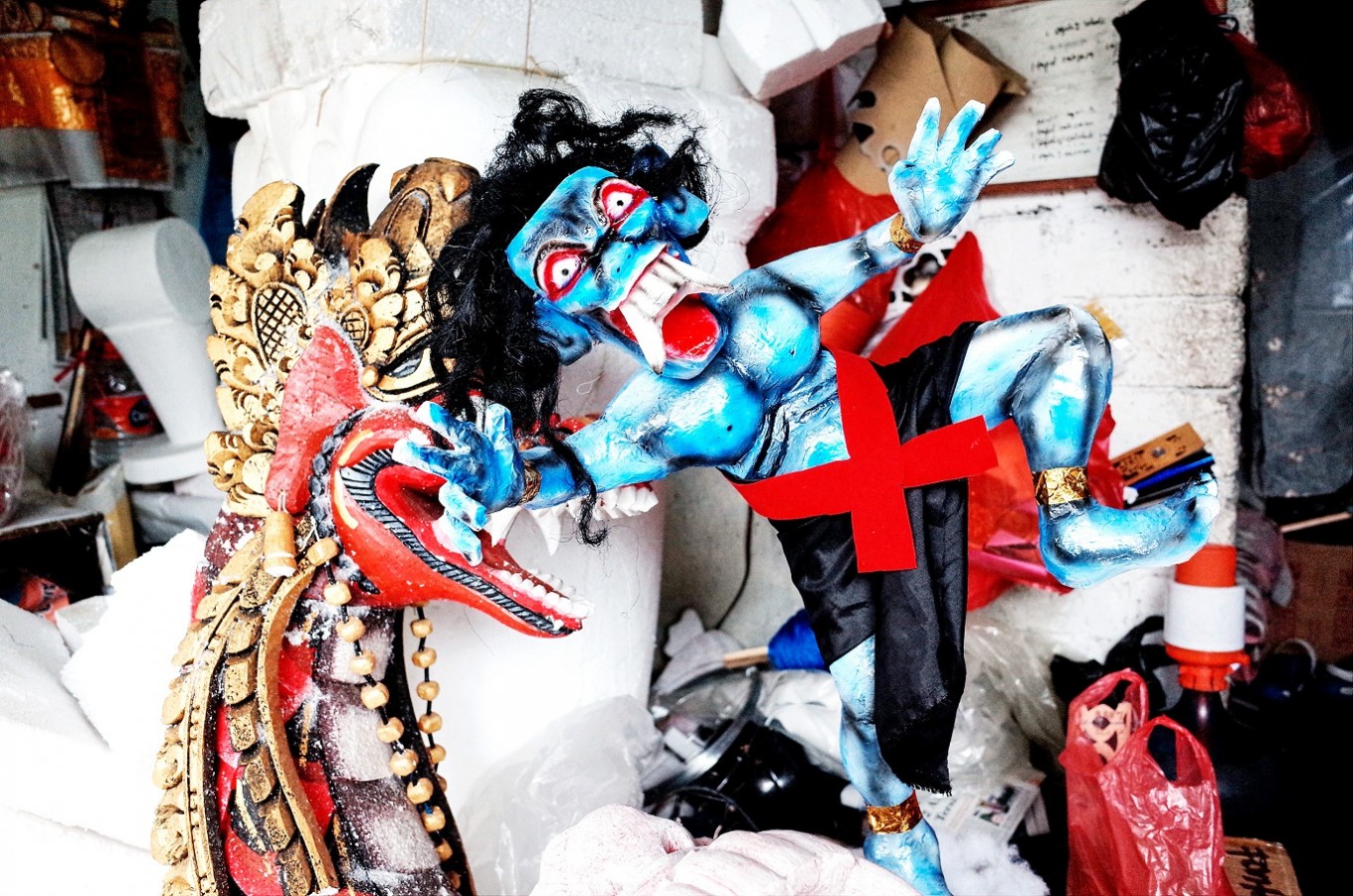 For sale: Ogoh-ogoh miniatures with prices that range from Rp 65,000 (US$ 4.87) to Rp 300,000 are in high demand in the days prior to Nyepi.(JP/Anggara Mahendra)
For sale: Ogoh-ogoh miniatures with prices that range from Rp 65,000 (US$ 4.87) to Rp 300,000 are in high demand in the days prior to Nyepi.(JP/Anggara Mahendra)
In these years of freedom, mythological demons were replaced with real-life demons: greedy politicians and corrupt leaders. Ogoh-ogoh of these modern-day scoundrels were paraded alongside papier-mache effigies of Hindu gods and Balinese witches.
The youths also experimented with new designs, materials, and technology, which resulted in an island-wide trend of crafting gravity-defying ogoh-ogoh adorned with electric lamps and sound effects.
This year, youths from Banjar Kaja in South Denpasar will parade ogoh-ogoh equipped with voice-activated sensors, which enable the youths to trigger the movement of the ogoh-ogoh using the sound of their gamelan ensemble.
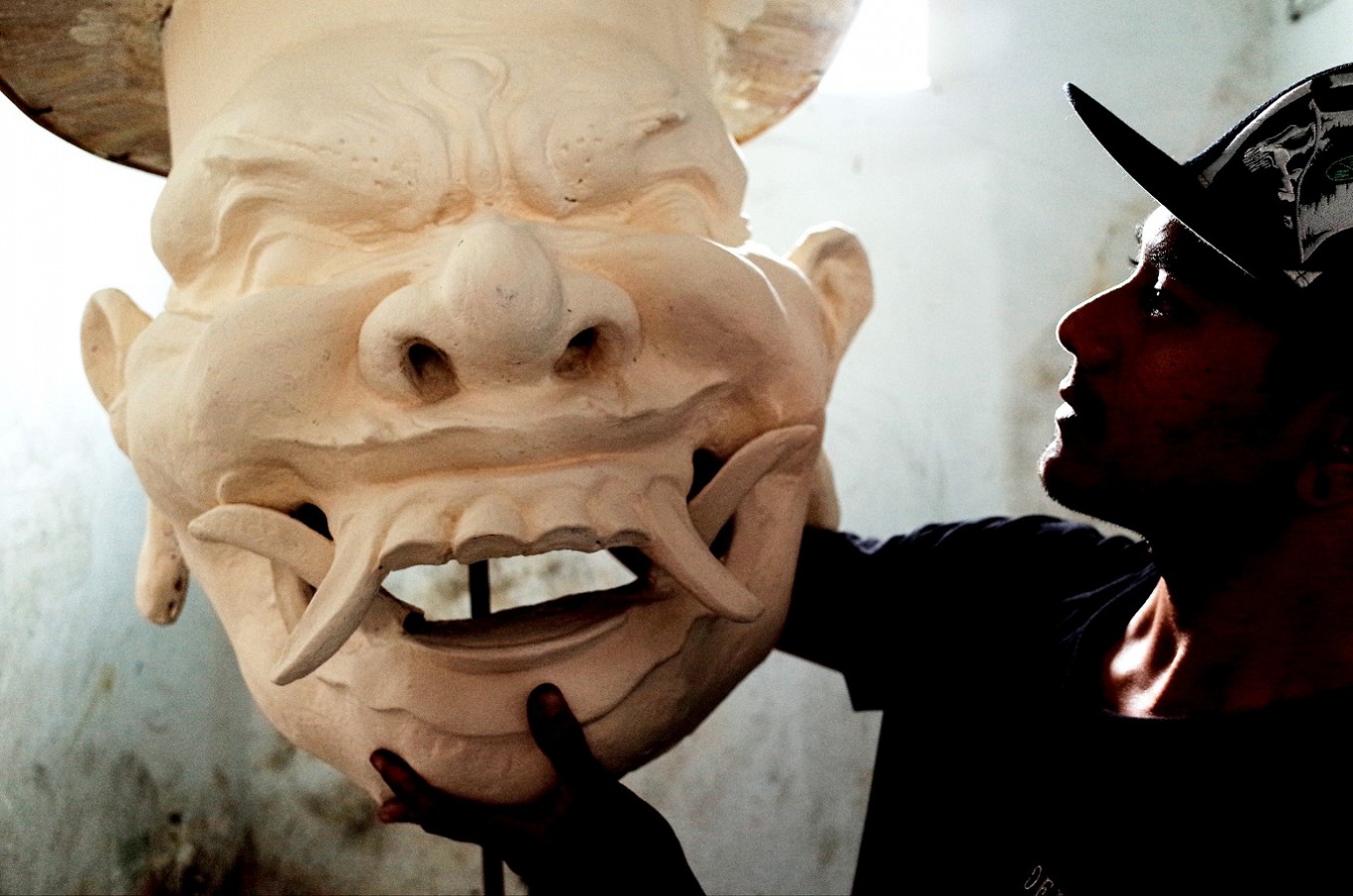 Two faces: Marmar Herayukti, the young creator who leads the campaign for ecofriendly ogoh-ogoh, poses with the head part of a figure.(JP/Anggara Mahendra)
Two faces: Marmar Herayukti, the young creator who leads the campaign for ecofriendly ogoh-ogoh, poses with the head part of a figure.(JP/Anggara Mahendra)
The experimentation also brought the toxic polystyrene foam, locally called “styrofoam”, as the ogoh-ogoh’s material of choice among the youths. It is easier to shape and faster to craft than the old material of woven bamboo and used paper.
“Not many people are aware that it is a toxic substance. It also robs us of the opportunity to learn and practice the useful skill of weaving bamboo,” Marmar Herayukti said.
A tattoo artist and a youth leader, Marmar has in the last couple of years led a campaign to educate youths in the “old-school” way of making ogoh-ogoh.
His campaign has gained a strong ground in Denpasar, where one of the criteria for inclusion in the official ogoh-ogoh competition is the use of eco-friendly materials.
“Weaving bamboo and using used paper also require more manpower, thus, restoring the making of ogoh-ogoh into a collective activity that brings the youths of a banjar closer together.”
This year, there will be more than 7,000 ogoh-ogoh paraded in streets across the island. Some will reflect Kedux’s and Marmar’s vision on celebrating the island’s cultural roots, others will capture the youths’ thrilling urge to experiment, yet all will reveal the vibrant creativity of the new generation of Balinese.

